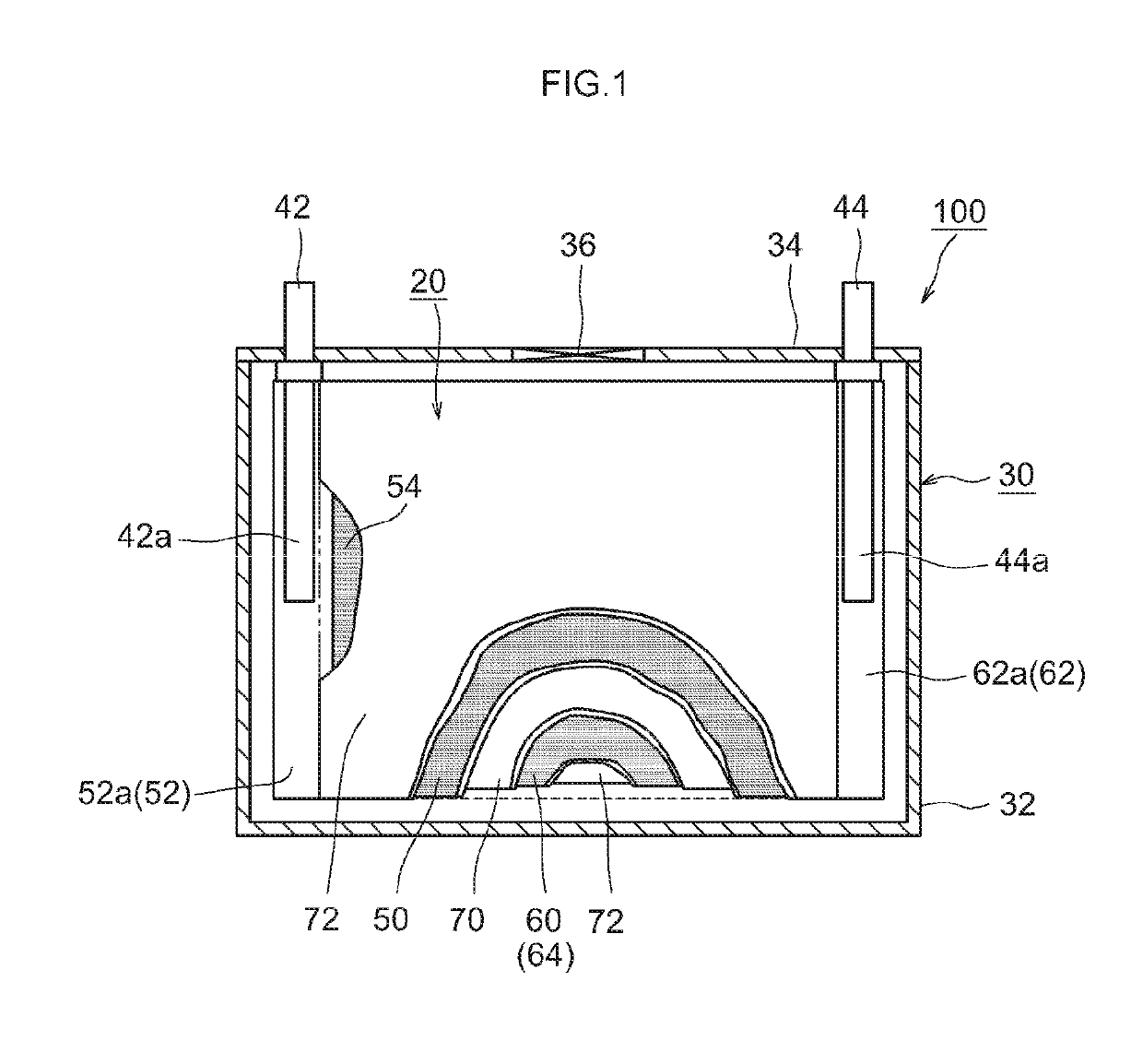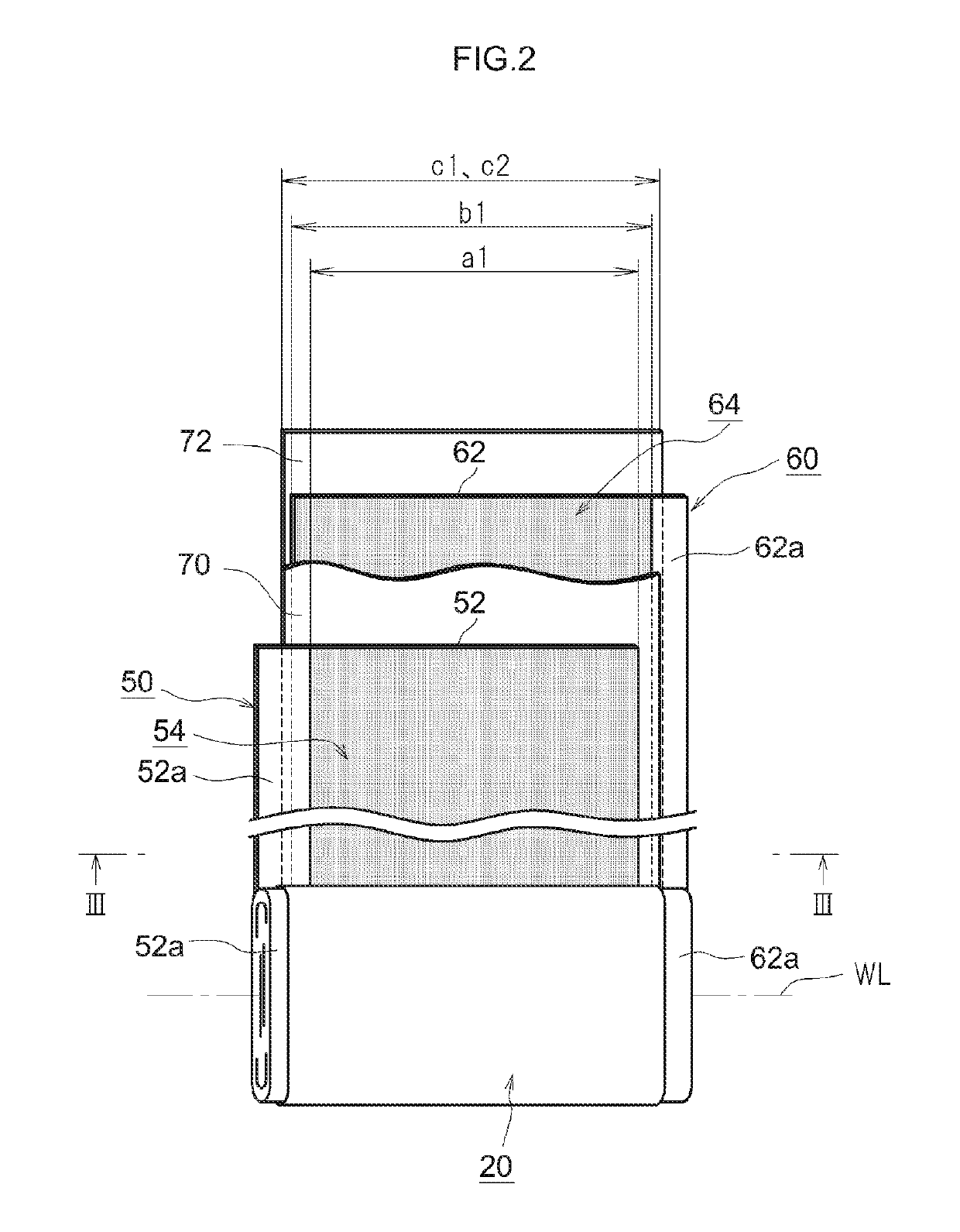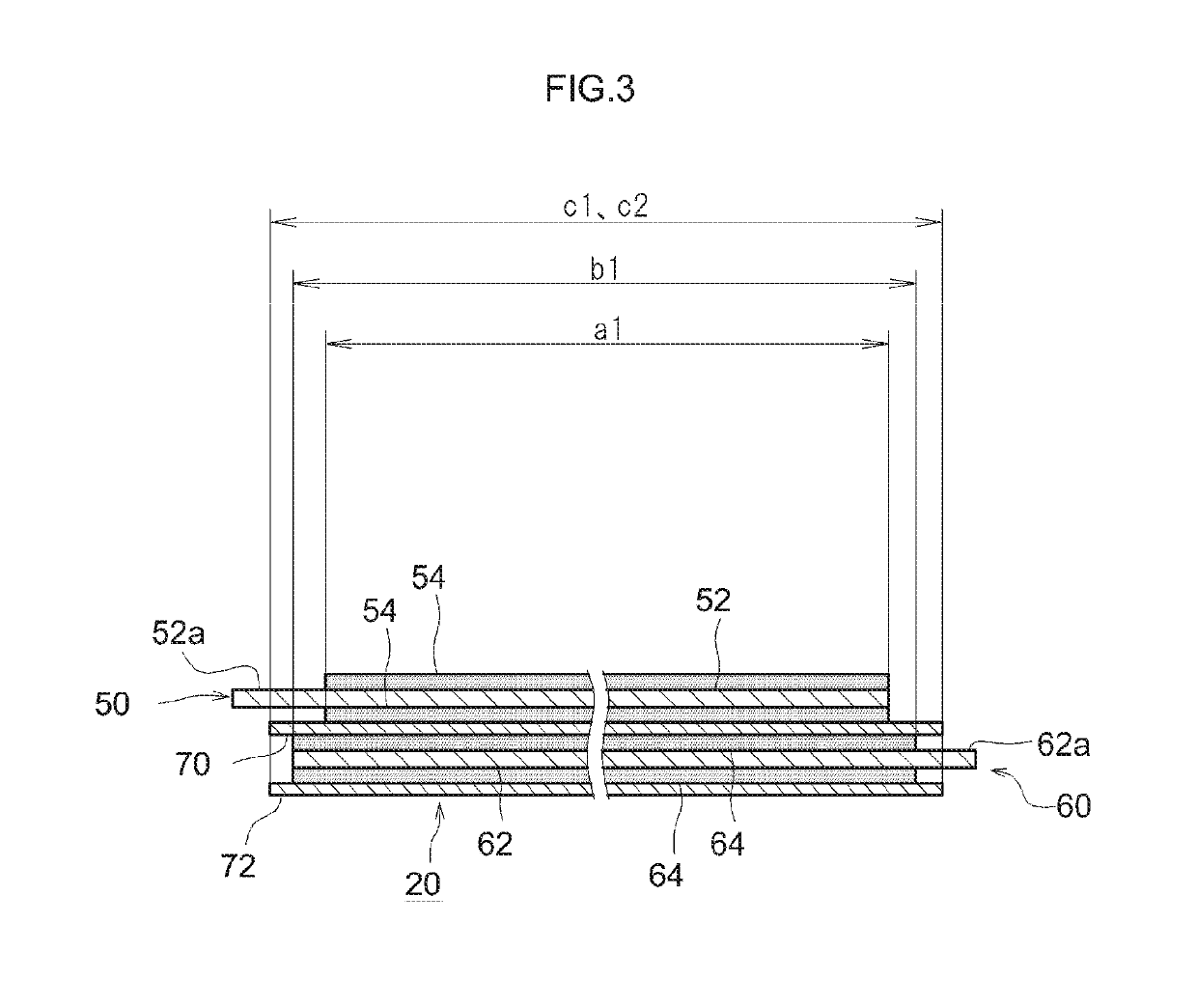Nonaqueous electrolyte secondary battery
a secondary battery and electrolyte technology, applied in the direction of non-aqueous electrolyte accumulator electrodes, cell components, electrical equipment, etc., can solve problems such as battery capacity deterioration, and achieve the effect of suppressing capacity deterioration
- Summary
- Abstract
- Description
- Claims
- Application Information
AI Technical Summary
Benefits of technology
Problems solved by technology
Method used
Image
Examples
Embodiment Construction
[0017]An embodiment of the present invention is described in the following. Matters required for the execution of the present invention but not particularly described in this Specification can be understood as design matters for the individual skilled in the art based on the conventional art in the pertinent field. The present invention can be implemented based on the contents disclosed in this Specification and the common general technical knowledge in the pertinent field. In this Specification, “secondary battery” refers generally to a storage device capable of undergoing repeated charging and discharging and is a term that encompasses such storage devices as electric double-layer capacitors and so-called storage batteries, e.g., lithium ion secondary batteries. In addition, “nonaqueous electrolyte secondary battery” refers to a battery that is provided with a nonaqueous electrolyte solution (typically an electrolyte solution that contains a supporting salt (supporting electrolyte...
PUM
| Property | Measurement | Unit |
|---|---|---|
| thickness | aaaaa | aaaaa |
| positive electrode potential | aaaaa | aaaaa |
| particle diameter | aaaaa | aaaaa |
Abstract
Description
Claims
Application Information
 Login to View More
Login to View More - R&D
- Intellectual Property
- Life Sciences
- Materials
- Tech Scout
- Unparalleled Data Quality
- Higher Quality Content
- 60% Fewer Hallucinations
Browse by: Latest US Patents, China's latest patents, Technical Efficacy Thesaurus, Application Domain, Technology Topic, Popular Technical Reports.
© 2025 PatSnap. All rights reserved.Legal|Privacy policy|Modern Slavery Act Transparency Statement|Sitemap|About US| Contact US: help@patsnap.com



